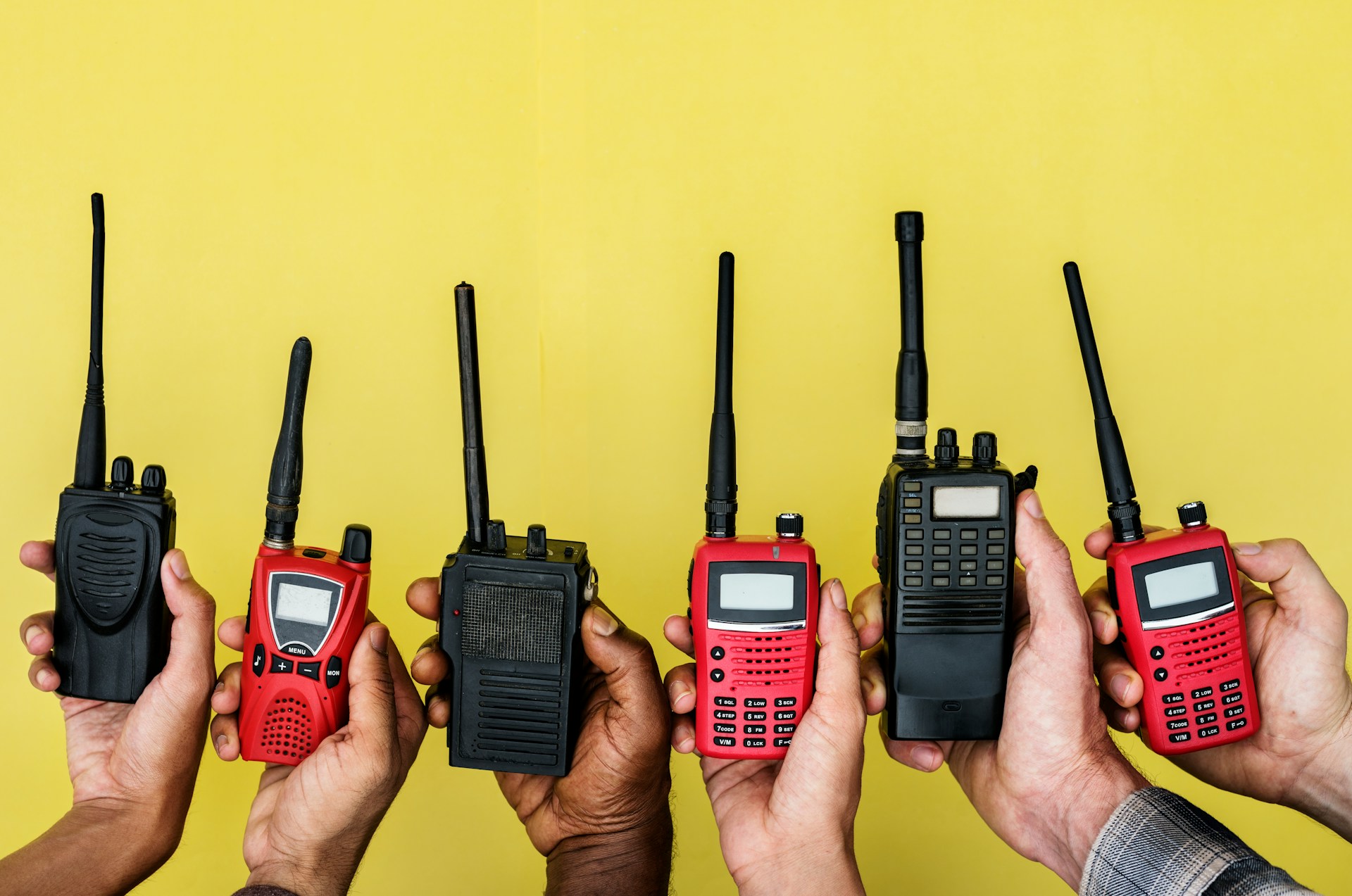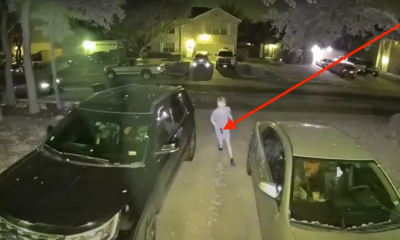Preparedness
Florida Home Invader Learns Deadly Lesson on Self-Defense Rights

In a recent incident in Florida, a homeowner exercised his right to self-defense when faced with a home invasion by two masked individuals. The confrontation took place on a Thursday night in the Lakewood Ranch area, approximately 30 minutes northeast of Sarasota, as reported by WTVT-TV.
The Manatee County Sheriff’s Office detailed that the homeowner’s surveillance system detected movement outside his residence around 9 p.m. Upon noticing two masked intruders, the homeowner instructed his wife to seek safety and armed himself.
Sheriff Rick Wells, speaking at a news conference, confirmed that one of the suspects was shot multiple times and later succumbed to his injuries at Sarasota Memorial Hospital.
“This is the state of Florida,” Wells stated. “If you want to break into someone’s home, you should expect to be shot.”
Law enforcement, assisted by K9 units, apprehended the second suspect, Michel Soto-Mella, a few blocks away. Soto-Mella, originally from Chile, had overstayed his visa, which expired in September.
“We’re trying to get everything that we can from the [surviving] suspect,” Wells explained. “He’s being somewhat cooperative, but he’s not telling us everything.”
“The homeowner is a hero!” one commenter wrote. Another added, “One died. Oh well. That’s what you get. So many rotten people in the world unfortunately.”
A third commenter echoed these sentiments, stating, “Good, one less criminal! Go work hard for what you want in life!”
This incident underscores the importance of self-defense and the potential consequences of criminal activities, especially in a state like Florida, where homeowners are prepared to protect their property.
Watch a local news report about the incident below:
Let us know what you think, please share your thoughts in the comments below.

Preparedness
Homebrew Your Own Healthier Beer at Home

Creating your own beer at home can be a rewarding and health-conscious endeavor. While excessive beer consumption isn’t advisable, moderate intake has its benefits due to the presence of antioxidants, fiber, protein, vitamin B, and silicon. These nutrients stem from the core ingredients of beer: malt, yeast, and hops.
Homebrewing allows you to take control over the process, particularly when it comes to filtering. Commercial breweries often filter their beer extensively, which can strip away some of these beneficial nutrients. By choosing not to filter your homebrew, you retain more of these healthy components.
Moreover, homebrewing offers the opportunity to experiment with ingredients that are rarely used commercially. Ancient brewers often included various herbs, transforming their brews into something akin to health tonics. Ingredients like nettles, yarrow, sage, dandelion, heather, and chamomile can add both unique flavors and health benefits to your beer.
“It’s important to research any new herb before using it, as some can have adverse effects.”
Starting your homebrewing journey is accessible and affordable. A basic reusable kit, which includes the necessary equipment and ingredients for brewing a gallon of beer, can be purchased for around $50. This is a great way to test your interest in the hobby. For those ready to commit, larger kits and specialized ingredient packs are available.
For beginners, brewing with malt extract is a practical choice. It requires minimal equipment and effort while still yielding quality beer. Essential equipment includes a boil pot, which can be as simple as a water bath style canner.
“Thoroughly clean all brewing equipment with an unscented cleanser to avoid contamination from microorganisms.”
Begin by boiling a gallon of water, then remove the pot from heat to stir in the malt extract. This prevents scorching. Once dissolved, return the mixture to a boil and add the bittering hops as directed.
“Everything that comes into contact with the wort after the boil must be sanitized.”
After boiling for 30 minutes, you’ve created wort, the unfermented liquid that will become beer. Cool the wort by adding it to a fermenter filled halfway with cold water. Once it reaches 70-75°F (21-24°C), add the yeast.
“Seal the fermenter with a clean and sanitized airlock and bung.”
Over the next 1-2 weeks, the yeast will ferment the sugars into CO2 and alcohol. Choose a location for the fermenter that is within the recommended temperature range and minimizes disturbances.
“Signs of fermentation include a bubbling airlock and the formation of kraeusen.”
Once fermentation is complete, typically after 3-4 weeks, it’s time to carbonate the beer. This involves adding a priming sugar solution to the beer before bottling.
“Fill the clean and sanitized bottles up to the very rim of the bottle neck.”
Cap the bottles and let them sit at room temperature for 2-3 weeks to carbonate. Finally, enjoy your homebrewed beer, knowing it’s not just a beverage but a healthier alternative crafted by your own hands. For further exploration into homebrewing, the American Homebrewers Association offers a wealth of resources.
Let us know what you think, please share your thoughts in the comments below.
Preparedness
Craft Your Own Clever Hiding Spots for Valuables

Creating a diversion safe is a clever way to protect your valuables from potential thieves. These hidden compartments are designed to look like everyday items, making them unlikely targets during a hasty search. While commercial options are available, crafting your own offers a unique advantage: customization. This personal touch can deter all but the most determined intruders.
A classic example is the hollowed-out book. This method requires a thick tome and a sharp knife to carve out a space within the pages. It’s essential that the book blends into your existing collection, as a lone, conspicuous volume might attract unwanted attention. As with all diversion safes, the key is to ensure it doesn’t stand out.
For a more portable option, consider repurposing a lip balm container. By removing the contents and thoroughly cleaning the tube, you can create a discreet hiding place for small items like cash. To enhance its stealth, you might even leave a small amount of balm in the base, maintaining its appearance as a functional product.
False drawer bottoms offer another ingenious solution, though they require a bit more craftsmanship. These are ideal for flat objects, but precision is crucial to ensure the false bottom remains undetectable. A poorly constructed drawer could easily betray its secret.
Houseplants can also serve as effective diversion safes. By burying a sealed container beneath the soil of a potted plant, you can create a hidden compartment that blends seamlessly with your home decor. This method works best when you have multiple plants, ensuring the single pot doesn’t draw attention.
A toothpaste tube is an unlikely candidate for a diversion safe, but it can be surprisingly effective. By cutting open an empty tube near the crimped end, you can stash small valuables inside. Once filled, the tube should be rolled up to mimic a nearly used product, with just enough air let out to maintain its appearance.
Exploring hollow handles and spaces in household tools can reveal unexpected hiding places. Items like brooms or kitchen cabinets with angled walls often have hollow areas perfect for storing goods. The challenge lies in concealing access to these spaces, but once mastered, they offer ample storage for items you don’t need to access frequently.
When crafting or selecting a diversion safe, it’s wise to avoid certain types. “Avoid drink diversion safes,” as these can be tempting targets for thieves seeking a quick refreshment. Similarly, “Avoid candle diversion safes,” since candles become highly valuable in crisis situations. Lighters, too, are best avoided as they are prized for their utility in starting fires.
In essence, the key to a successful diversion safe is to choose items that won’t be coveted during a crisis. This means steering clear of anything resembling food or water, as these will be more sought after than gold during desperate times. By using creativity and common sense, you can create a secure hiding spot that keeps your valuables safe from prying eyes.
Let us know what you think, please share your thoughts in the comments below.
Preparedness
Boost Emergency Preparedness with These Reliable Communication Tools

In today’s digital age, our reliance on cell phones is almost absolute. Many people have even abandoned traditional landlines, trusting in the ubiquitous presence of cellular and internet services. Yet, what happens when these services fail? It’s crucial to have a backup communication plan, especially in emergency situations where anxiety can impair memory and decision-making.
One effective solution is the use of two-way radios, which can transmit and receive information without relying on cellular networks. These devices are invaluable for short-distance communication and, with the right equipment, can even facilitate long-distance communication across the globe. However, it’s important to remember that “the information is available for anyone listening,” so communication should be discreet and words chosen carefully.
Two-way radios come in various forms, each with its own capabilities, licensing requirements, and operational skills. Family Radio Service (FRS) radios, commonly found in big-box stores, are a popular option. Operating on the UHF band between 462 and 467 MHz, they are ideal for short-range communication. While manufacturers may claim a range of 40 miles, practical use often limits them to about 5 miles in open terrain, and even less in urban areas or canyons. Despite their limitations, FRS radios are handy in areas without cell service, and they require no license or monthly fees.
For those needing greater range, General Mobile Radio Service (GMRS) radios are a step up. These radios can cover distances from 5 to 25 miles and operate on eight exclusive channels in the 462 MHz range. While most handheld units transmit at 1 watt or less, mobile units can reach up to 5 watts. Operating at up to 50 watts is possible, but requires a license for legal use, obtainable by individuals 18 or older.
Citizen Band (CB) radios, once a staple for truckers and travelers in the 70s and 80s, still offer reliable communication over a range of up to 20 miles, especially with vehicle-mounted or base station setups. No license is required, making them a practical choice for road travel and emergency communication.
For those seeking the most versatile option, amateur or ham radios provide unmatched flexibility. Capable of transmitting voice, text, image, and data over vast distances, these radios require a license to operate. The entry-level Technician Class license is accessible and allows for local emergency communication. Ham radios operate on VHF and UHF frequencies, each suited to different terrains, and can be creatively adapted for discreet use with hidden antennas.
Choosing the right communication system depends on individual needs. FRS radios are perfect for close-range communication, such as keeping track of children in a park. CB radios excel for group travel and navigating logging roads. Ham radios, with their extensive reach, are ideal for emergency response, though they do require a financial investment and licensing.
In an ideal scenario, having access to all three types of radios would maximize your ability to communicate with family and community members, regardless of distance or circumstances.
Let us know what you think, please share your thoughts in the comments below.
-

 Tactical1 year ago
Tactical1 year ago70-Year-Old Fends Off Intruder with Lead-Powered Message
-

 Tactical1 year ago
Tactical1 year agoVape Shop Employee Confronts Armed Crooks, Sends Them Running
-

 Preparedness1 year ago
Preparedness1 year agoEx-Ballerina’s Guilty Verdict Sends Tremors Through Gun-Owner Community
-

 Preparedness11 months ago
Preparedness11 months agoGood Samaritan Saves Trooper in Harrowing Interstate Confrontation
-

 Tactical1 year ago
Tactical1 year agoMidnight SUV Theft Interrupted by Armed Homeowner’s Retaliation
-

 Survival Stories2 years ago
Survival Stories2 years agoEmily’s 30-Day Experience of Being Stranded on a Desert Island
-

 Preparedness12 months ago
Preparedness12 months agoArizona Engineer’s Headless Body Found in Desert: Friend Charged
-

 Preparedness11 months ago
Preparedness11 months agoBoy Saves Dad from Bear Attack with One Perfect Shot